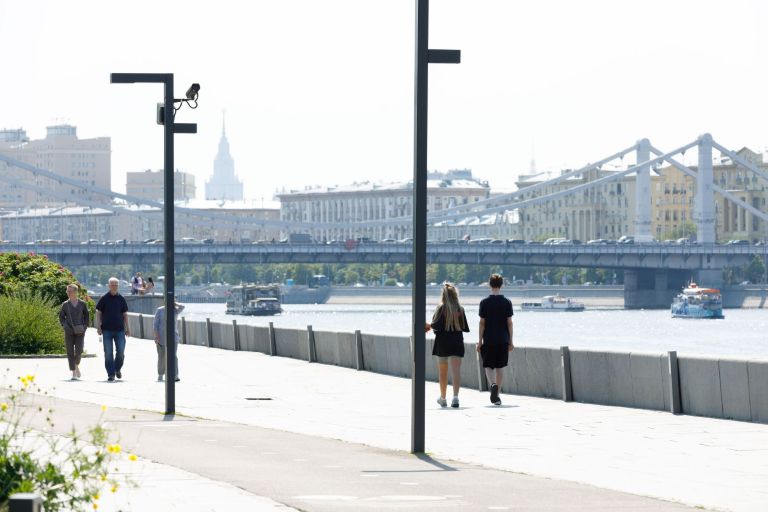Построенный в 1936-1938 годах, взамен старого узкого моста (на самом деле он был четвертым на этом месте), соединявшего две дуги Садового Кольца, новый Крымский мост стал не только красивейшим на Москве-реке, но и первым подвесным в столице. В довоенное время это был крупнейший подвесной мост в Европе, созданный архитектором А.В. Власовым и инженером Б. П. Константиновым.
С середины 1930-х Александр Васильевич Власов, один из талантливейших архитекторов своего поколения занимается реконструкцией юго-запада реки Москвы. Под его руководством, в продолжение работы К. С. Мельникова и Эль Лисицкого, обветшавшие павильоны ВСХВ были превращены в триумфальный Парк культуры имени М. Горького, ставший образцом для всей страны. А самые напряженные части Садового Кольца были, наконец, соединены современным мостом. Что интересно, во время строительства нового моста старый продолжал использоваться, его передвинули на 50 метров вниз по течению реки.
В отличие от других новых мостов центра города — Большого Каменного, Замоскворецкого, Устьинского, Крымский мост не рядится в одежды исторической архитектуры — выразительным средством здесь остается сама конструкция. Четыре независимых пилона (редкость для подобных мостов) связаны попарно, образуя продольные стороны одного пролета — их изгиб зримо подтверждает скрытые силы напряжений.
Огромные звенья цепей моста сделаны из стали марки ОДС — ординарная Дворца Советов, выплавленной специально для строительства так и не возведенного сталинского супернебоскреба.













%20BEL_0521.jpg&w=1920&q=75)






